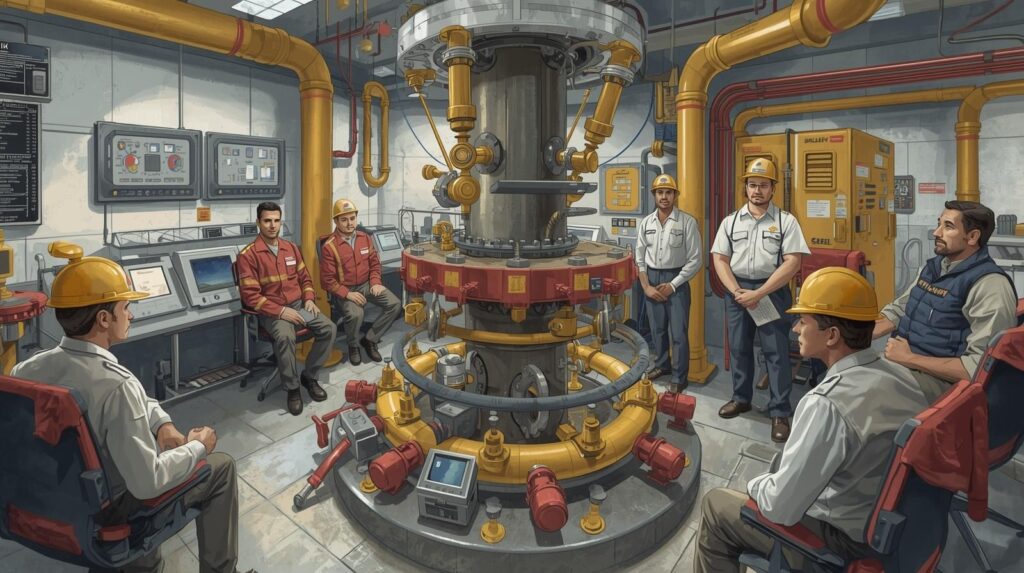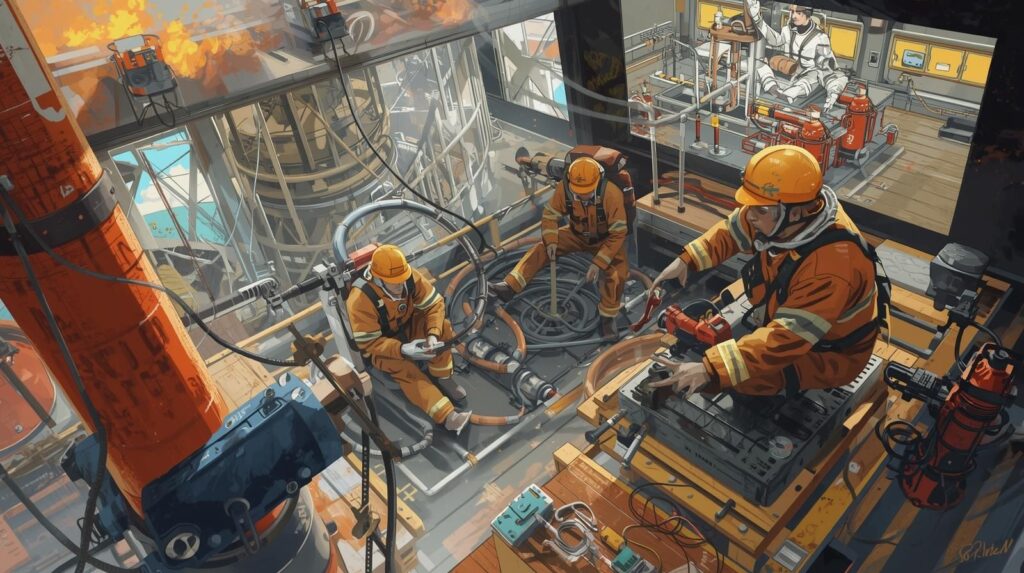Here’s a complete course outline for Pre-IWCF Well Control Training with all the details structured for you:

Pre-IWCF Well Control Training
Course Description
The Pre-IWCF Well Control Training is designed as a foundation-level course to prepare drilling, workover, and well service personnel for the IWCF Well Control certification program. The course introduces participants to the fundamental principles of well control, pressure concepts, barriers, and basic well control techniques. It helps build the knowledge and confidence needed to successfully progress to the official IWCF Level 2 or Level 3/4 training.
This training combines theoretical sessions with practical exercises on drilling simulators, ensuring that participants understand both the concepts and their application in real-world well control scenarios.
Course Objectives
By the end of this course, participants will be able to:
- Understand the principles of well control and why it is critical in drilling and well servicing operations.
- Identify causes of kicks and blowouts, and recognize early warning signs.
- Explain hydrostatic pressure, formation pressure, and kick tolerance.
- Understand primary and secondary barriers in well control.
- Describe well control equipment, including BOPs and associated systems.
- Perform basic shut-in procedures for different well control situations.
- Gain familiarity with IWCF exam structure and expectations.
- Build confidence before attempting official IWCF certification.

Who Should Attend
- New drilling engineers, assistant drillers, and drill crew members.
- Well service and workover personnel preparing for IWCF training.
- Supervisors and managers new to drilling operations.
- Anyone seeking an introduction to well control before attending IWCF certification courses.
Course Content
- Introduction to Well Control
- Importance of well control
- Barriers and well integrity basics
- Pressure Concepts
- Hydrostatic, formation, and surface pressure
- Kick causes and detection
- Well Control Equipment
- Blowout Preventers (BOPs)
- Choke and kill systems
- Accumulators
- Well Control Methods
- Shut-in procedures (driller’s method, wait-and-weight method overview)
- Gas migration and volumetric control basics
- Kick Detection and Shut-In
- Kick indicators
- Shut-in procedures for drilling and workover
- Practical Simulator Sessions
- Handling simulated kick scenarios
- Applying correct procedures in real-time
- Pre-IWCF Exam Preparation
- Mock questions and exercises
- Guidance on IWCF exam format

CPD Units
- Typically 24 to 30 CPD hours (depending on provider and duration).
Course Duration
- 3 to 5 days (commonly 4 days).
Course Fees
- Average: USD 800 – 1,500 (varies by location and training provider).

After Course – Job & Salary Impact
- Prepares participants for IWCF Level 2 or Level 3/4 Well Control certification, which is mandatory for many drilling and well service jobs worldwide.
- Opens opportunities for drilling engineers, assistant drillers, toolpushers, and well service operators.
- Certified well control professionals can expect higher salaries, with many offshore drilling roles starting from USD 80,000 – 150,000 annually depending on experience and region.
Tags
Pre-IWCF Well Control Training, Well Control Course, IWCF Preparation, Drilling Training, Well Control Basics, IWCF Level 2, Oil and Gas Training, Blowout Preventer Training, Kick Detection, Pre-IWCF Certification


